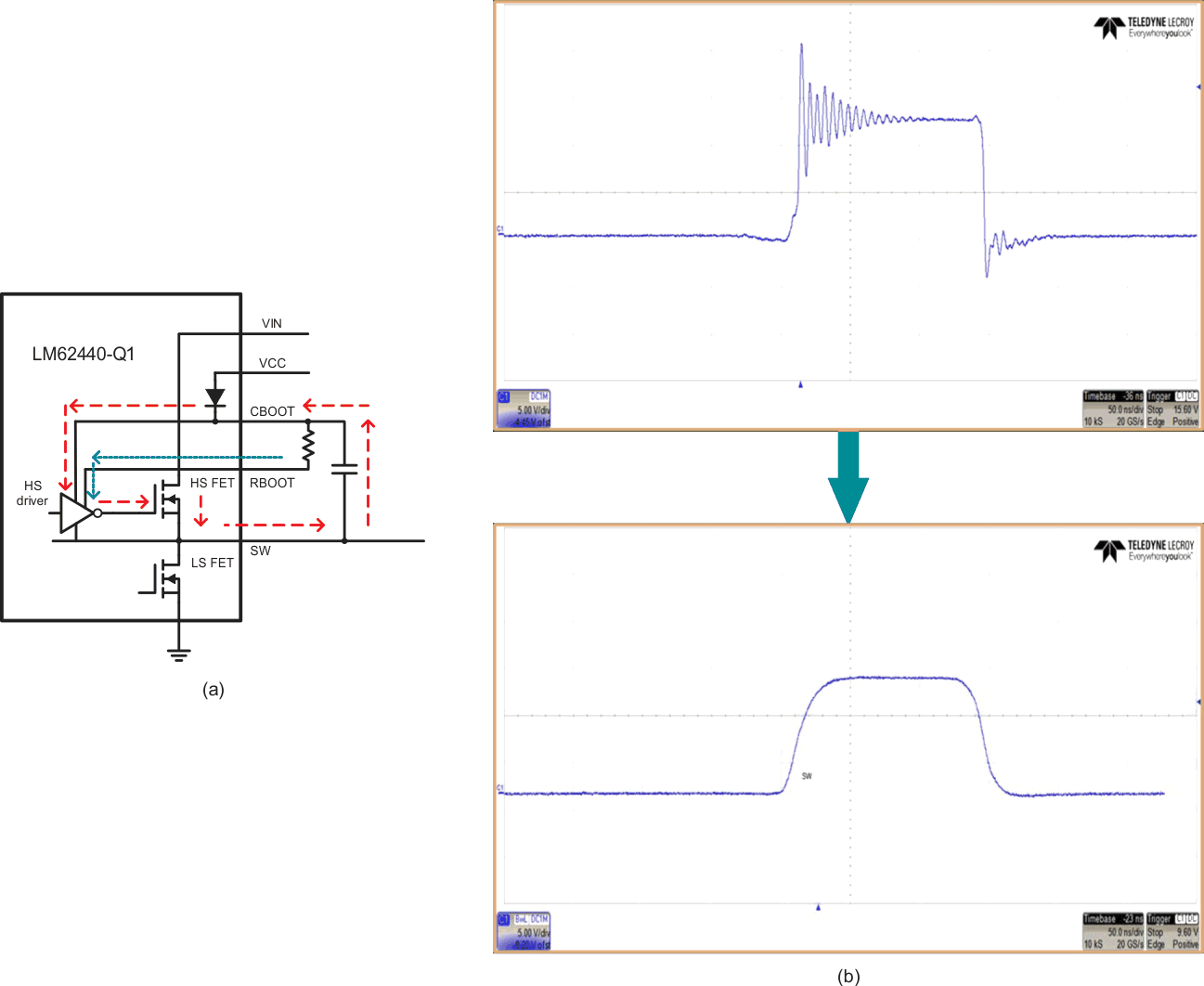SLYY200A April 2021 – December 2023 LM25149 , LM25149-Q1 , LM5156-Q1 , LM5157-Q1 , LM53635-Q1 , LM60440-Q1 , LM61460-Q1 , LM61495-Q1 , LMQ62440-Q1 , LMR33630-Q1 , LMS3655-Q1 , TPS55165-Q1 , UCC12040 , UCC12050
- 1
- Overview
- At a glance
- What is EMI?
- Conventional methods to reduce EMI in the low- and high-frequency ranges
- Innovations in reducing low-frequency emissions
- Spread spectrum
- Active EMI filtering
- Cancellation windings
- Innovations in reducing high-frequency emissions
- HotRod™ package
- Enhanced HotRod QFN
- Integrated input bypass capacitor
- True slew-rate control
- EMI modeling capabilities
- Low-frequency EMI designs using WEBENCH® design tool
- Conducted and radiated EMI results published in data sheets
- Conclusion
- Keep product categories for low EMI
True slew-rate control
Despite the aforementioned techniques, in some designs high-frequency EMI (60 to 250 MHz) may still not fall under specified standard limits. One way to mitigate and improve the margin in order to pass industry standards is to use a resistor in series with the boot capacitor of the switching converter. Using a resistor reduces the switching-edge slew rates, which reduces EMI, but comes with the expected penalty of reduced efficiency.
Switching converters such as the LM61440-Q1 and LM62440-Q1 are designed such that a resistor can be used to select the strength of the high-side FET’s driver during turn-on. As shown in Figure 23, the current drawn through the RBOOT pin (the teal dotted loop) is multiplied and drawn through from CBOOT (the red dashed line) to turn on the high-side power MOSFET. By doing this, the resistor can control the slew rate, but not suffer the efficiency loss that happens when a series BOOT resistor runs the majority of the current. With RBOOT short-circuited to CBOOT, the rise time is rapid; switch-node harmonics will not roll off until above 150 MHz. If CBOOT and RBOOT remain connected through 700 Ω, the slewing time increases to 10 ns when converting 13.5 V to 5 V. This slow rise time enables the energy in switch-node harmonics to roll off near 50 MHz under most conditions.
 Figure 22 Radiated EMI performance of
the LMQ62440-Q1 device without and with integrated bypass capacitors.
Figure 22 Radiated EMI performance of
the LMQ62440-Q1 device without and with integrated bypass capacitors. Figure 23 True slew-rate control implementation in the LM62440 (a); reduction in
switch-node ringing using true slew-rate control (b).
Figure 23 True slew-rate control implementation in the LM62440 (a); reduction in
switch-node ringing using true slew-rate control (b).